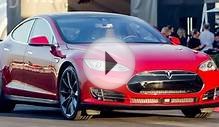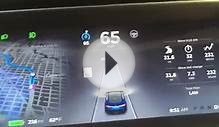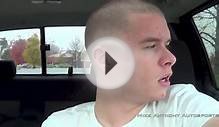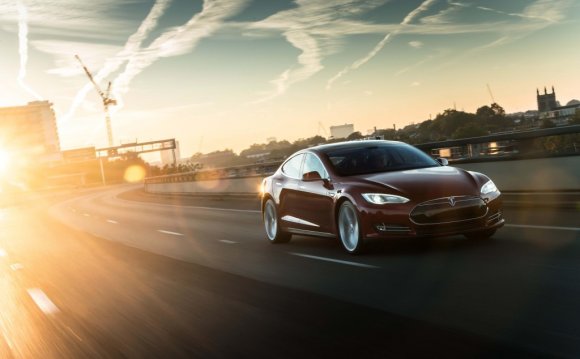
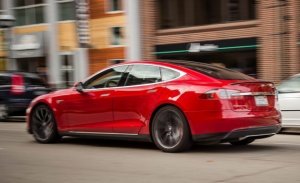 WHAT WE LIKE: The novelty of driving a Tesla Model S P85D has settled into normalcy. After more than 10, 000 miles, we’re no longer euphoric about the stealthy, snappy acceleration of 691 electric horsepower, nor are we as bemused by the prospect of one-pedal driving. In this case, though, familiarity hasn’t bred contempt. We remain impressed by the Model S’s performance, luxury, and real-world usability.
WHAT WE LIKE: The novelty of driving a Tesla Model S P85D has settled into normalcy. After more than 10, 000 miles, we’re no longer euphoric about the stealthy, snappy acceleration of 691 electric horsepower, nor are we as bemused by the prospect of one-pedal driving. In this case, though, familiarity hasn’t bred contempt. We remain impressed by the Model S’s performance, luxury, and real-world usability.
Life with a Model S is notably easier today compared with when we took delivery in April 2015. In September, our local power company dropped a new electrical line to our Ann Arbor office, providing enough power to charge our Model S at 240 volts and 80 amps. We can now add 58 miles of range per hour of charging, and if we’re truly in a rush, there’s a newly opened Supercharger less than three miles from our office. Bypassing the onboard charger with direct current at up to 400 volts pumps in electricity at a rate of hundreds of miles per hour. Tesla’s network of 227 (and counting) Supercharger locations in the United States now includes three in Michigan, with a fourth scheduled to come online in our home state by the end of 2015. While electricity still isn’t as convenient as gasoline, our charging times are shrinking and the area our Model S can reasonably reach is growing.
Our Model S has also grown smarter. The latest software, version 7.0, introduced new semiautonomous driving features like hands-free lane-keeping, automatic lane changing, and automated parallel parking. Tesla’s Autopilot isn’t flawless, but compared with the systems from Mercedes-Benz and BMW, it does a better job of staying centered in its lane, tracking around bends, and allowing the car to cruise for longer periods without driver input.
WHAT WE DON’T LIKE: Not only is Tesla prohibited from selling cars here, but Michigan law prevents Tesla from working on customers’ cars within the state at company-owned service centers or using its roving Ranger team. Our nearest service center is 180 miles away, just outside of Cleveland, Ohio, so repair work means the car is gone for days at a time.
Our car was retrieved by a Tesla agent and trailered to Cleveland, where technicians fixed the roof-rack covers and torqued the suspension bolts, although the shop couldn’t replicate the clicking that we reported. That seems to have done the trick, as the suspension is now as silent as the powertrain.
Tesla’s team was less successful with the driver’s seat. The technicians determined that our seat’s frame was bent and installed a new seat only to discover that that one had internal problems, as well. The shop ordered another but returned the car to us because it wasn’t due to arrive for several weeks. We’re still waiting to schedule a return visit to have the seat installed.
WHERE WE WENT: Aside from one 1600-mile road trip to Virginia, we’ve stayed relatively close to home with our Model S. Trips to the Lake Michigan shoreline and northern Michigan are now significantly easier thanks to the new Supercharger in Grand Rapids. We’ve also made multiple trips to Chicago and back by way of the Supercharger stations.
More important is the fact that the Model S can go home with any Car and Driver staffer on a given night. Thanks to its large battery pack, the Model S can easily cover a 100-mile round-trip commute on a single charge with range to spare for a trip to the grocery store or soccer practice. It’s the only electric car on the market with enough range to accommodate a typical workday.
Months in Fleet: 6 months Current Mileage: 12, 324 miles
Average Fuel Economy: 73 MPGe Battery Capacity: 85 kWh Range (EPA est.): 253 miles
INTERESTING VIDEO
